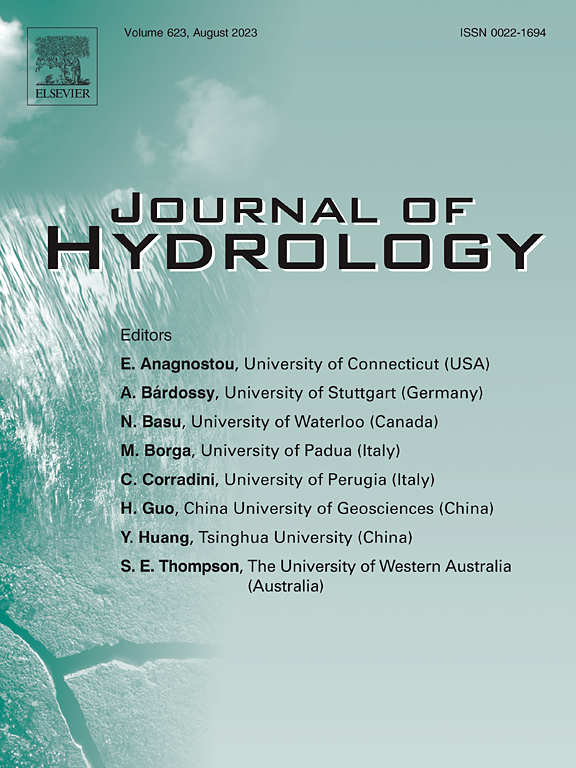Nonlinear propagation of meteorological to hydrological drought: Contrasting dynamics in humid and semi-arid regions
IF 5.9
1区 地球科学
Q1 ENGINEERING, CIVIL
引用次数: 0
Abstract
This study conducts a novel comparative analysis of the nonlinear propagation characteristics of meteorological drought to hydrological drought across humid and semi-arid regions, emphasizing the dominant driving factors behind these variations. The Standardized Precipitation Evapotranspiration Index (SPEI) and the Standardized Streamflow Index (SSI) were applied to characterize meteorological and hydrological droughts over a 60-year period (1961–2020). The Directed Information Transfer Index (DITI) was employed to estimate Nonlinear Drought Propagation Time (NDPT), while drought translation rates were calculated by matching drought events to evaluate the sensitivity and resistance of hydrological drought to meteorological drought. Additionally, a drought propagation threshold model was developed to establish meteorological drought thresholds that trigger varying levels of hydrological drought. Two representative basins in China were selected as case studies: the Jialing River Basin (JRB) in a humid region (Aridity Index, AI = 1.33) and the Wei River Basin (WRB) in a semi-arid region (AI = 0.43). The results reveal distinct regional differences in nonlinear drought propagation: (1) In the JRB, 130 meteorological droughts resulted in 70 hydrological droughts, with an average NDPT of 8 months, whereas the WRB recorded 145 meteorological droughts and 95 hydrological droughts, with an average NDPT of 9 months. (2) Humid regions exhibited greater resistance and lower sensitivity to drought propagation compared to semi-arid regions, primarily due to differences in runoff volumes and rainfall variability. (3) Key driving factors differed significantly between the regions: temperature was the primary driver in humid regions, while land-use change and precipitation variability dominated in semi-arid regions. These findings provide valuable insights into the contrasting dynamics of drought propagation in diverse climatic regions, offering critical implications for developing region-specific drought mitigation strategies.
求助全文
约1分钟内获得全文
求助全文
来源期刊

Journal of Hydrology
地学-地球科学综合
CiteScore
11.00
自引率
12.50%
发文量
1309
审稿时长
7.5 months
期刊介绍:
The Journal of Hydrology publishes original research papers and comprehensive reviews in all the subfields of the hydrological sciences including water based management and policy issues that impact on economics and society. These comprise, but are not limited to the physical, chemical, biogeochemical, stochastic and systems aspects of surface and groundwater hydrology, hydrometeorology and hydrogeology. Relevant topics incorporating the insights and methodologies of disciplines such as climatology, water resource systems, hydraulics, agrohydrology, geomorphology, soil science, instrumentation and remote sensing, civil and environmental engineering are included. Social science perspectives on hydrological problems such as resource and ecological economics, environmental sociology, psychology and behavioural science, management and policy analysis are also invited. Multi-and interdisciplinary analyses of hydrological problems are within scope. The science published in the Journal of Hydrology is relevant to catchment scales rather than exclusively to a local scale or site.
 求助内容:
求助内容: 应助结果提醒方式:
应助结果提醒方式:


